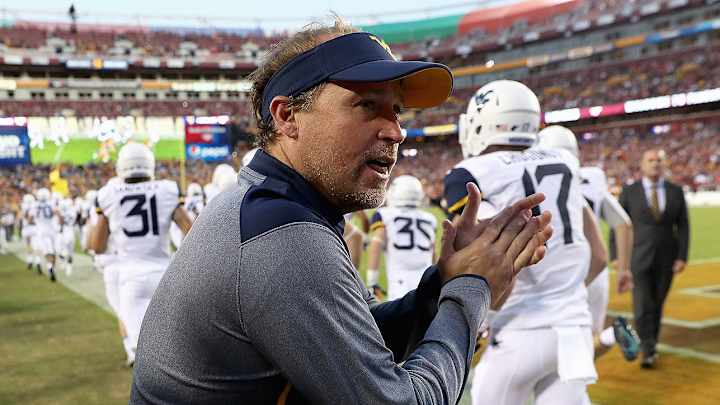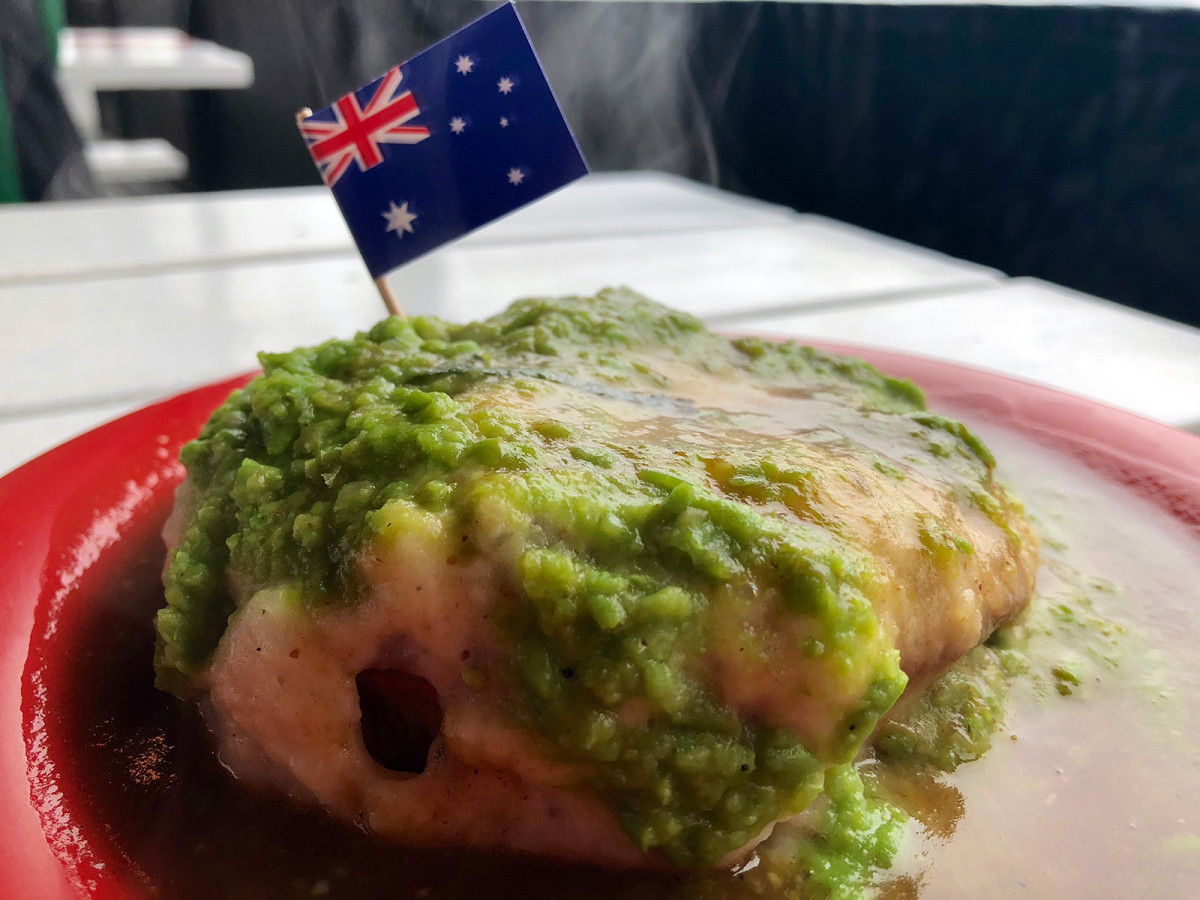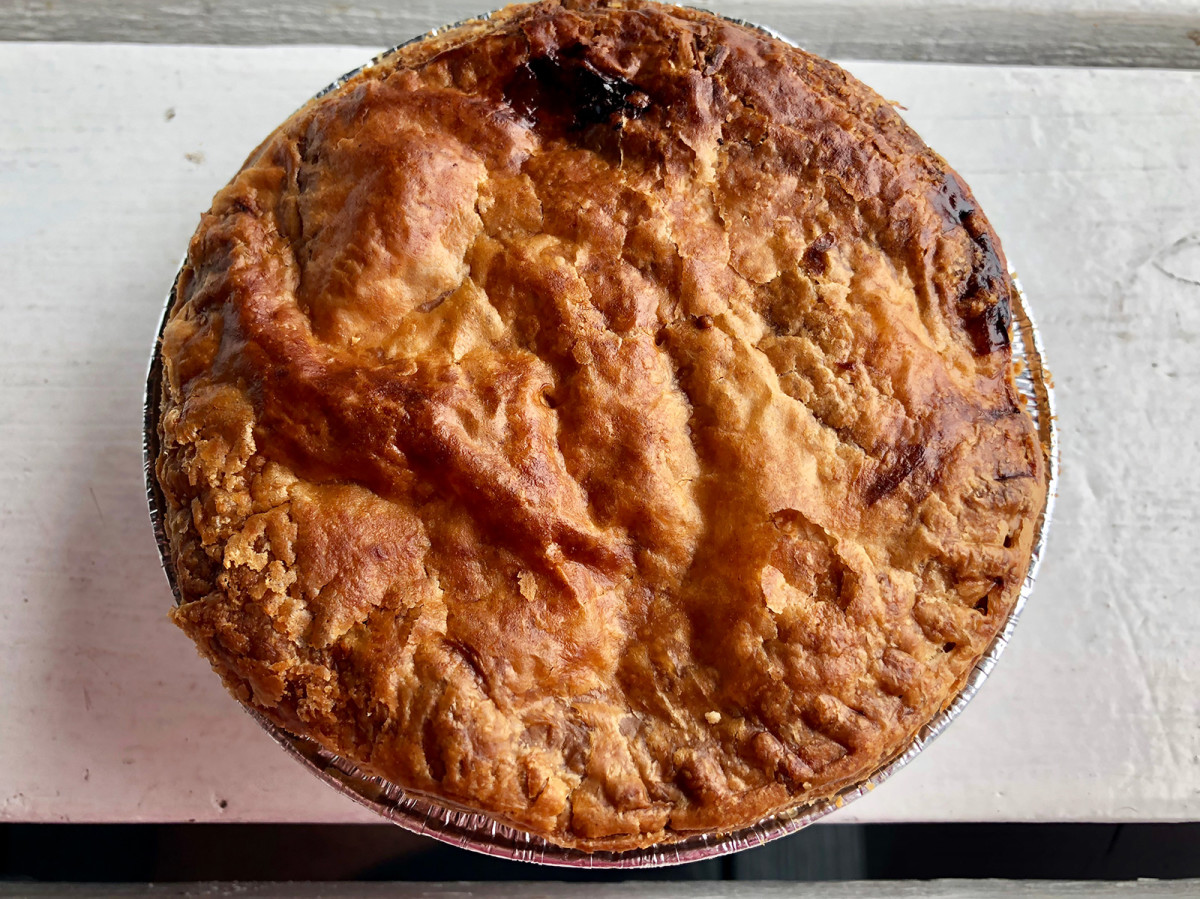College Football's New Redshirt Rule Is a 'Chess Match' Everyone Will Play Differently

West Virginia coach Dana Holgorsen burned tailback Martell Pettaway’s redshirt in November of Pettway’s freshman season, and it still makes Holgorsen mad that he had to do it. The Mountaineers lost starter Justin Crawford and backup Kennedy McKoy to injury while facing Iowa State, and the lone capable back who knew the offense was Pettaway.
“He was our only option,” Holgorsen says. “So we pulled his redshirt game 11. That ain’t fair to that kid. But he was like ‘Whatever I’ve got to do to help the team.’” Pettaway did more than help. He gained 180 yards on 30 carries and scored a touchdown, and West Virginia pulled away in the second half for a 49–19 win.
The redshirt burned, Pettaway played in West Virginia’s next two games. But the Mountaineers didn’t need him for either. He essentially lost a year of eligibility because of his willingness to help against Iowa State. He’ll be a junior this season when he should have been a sophomore. Fortunately, Holgorsen won’t have to burn a redshirt like that again. A new rule passed in June will allow players to play in four games—anywhere on the schedule—and still redshirt. This season will be a fascinating one as coaches try to determine how best to use that new roster flexibility.
We’ve already examined how the rule could affect Alabama’s quarterback competition. But that’s an extraordinary situation. More commonplace scenarios will play out on every team in America, and how the coaches handle them could impact this season and seasons to come. “It’s going to be a big chess match,” Texas coach Tom Herman says. “I don’t think anyone’s got the blueprint just yet.”
The previous rule allowed redshirts for players who didn’t play at all or for players who suffered early-season injuries. Sometimes, players appeared to feel fine but came down with mysterious injuries when their coaches realized they weren’t quite ready to contribute. “There’s probably no more faking injuries after game three—which everybody did,” Holgorsen says.
So what will happen? That probably depends on your team’s situation.

Wake Forest coach Dave Clawson would have loved for this rule to have been in effect during his first two seasons with the Demon Deacons. Clawson insisted on redshirting offensive linemen in 2014 and ’15 because he felt the only way to build a sustainable program was with an older, more physically mature line. Even though some of those freshmen could have helped as Wake Forest allowed 88 sacks and went 6–18, Clawson didn’t want to sacrifice future success for immediate aid that still might not help his team win. The plan worked. The Demon Deacons won seven games in ’16 and eight in ’17 and return a starting offensive line this season that includes four fifth-year seniors and one fourth-year junior. When those players leave, they’ll be replaced by third- and fourth-year players. But with the new rule, Clawson would have been able to play those young linemen late in the ’14 and ’15 seasons. Perhaps the experience some of those current redshirt seniors gained in ’14 would have kept the quarterbacks from getting drilled so many times in ’15.
The reclamation project might have been ahead of schedule. “If we could have given them three or four games of experience that year, how much better would they have been their second year?” Clawson says. “To be able to give guys that little baptism before they’re ready I think will help prepare them for their second year.”
Clawson breaks down incoming freshmen into three groups: Play, Redshirt and Red Alert. The first two categories are self-explanatory. The Red Alert category includes players the coaching staff isn’t sure are ready and players who simply may be behind too many quality veterans to contribute. These players may get an audition in the season-opener at Tulane and possibly in week two against Towson. Afterward, they’ll probably get placed in either the Play or Redshirt categories. If they go to the Redshirt category, they still may get called upon later in the season for spot duty.
Texas’s Herman says a likely scenario is if a team has a third-string tailback that it plans to redshirt and then loses its starter or backup for a game or two. That third-stringer would get the backup’s carries—and probably play on special teams—until the injured player returned. The redshirt year would still be preserved. Or, Herman says, coaches may bring in redshirting players as reinforcements at season’s end. “As the season progresses, if there’s a need in the depth chart, we’ll plug you in,” Herman says. “If there’s not, then we’ll save you until the end of the season and use you knowing that in the natural course of things there’s always going to be a need for extra bodies at the end of the year.”
Here’s a look at how three types of teams could use the rule to their advantage.
Elite teams
Alabama, Clemson and Ohio State have so much talent that some future pros are going to play limited roles as true freshmen. The issue is some of those players are so good that they could help and might even leapfrog a starter or backup if given a chance—and that only makes a great team better. They probably aren’t staying five years anyway, but just in case they do want to hang around on campus, the coach can try them out and still keep the redshirt as an option.
Imagine if Ohio State’s Urban Meyer could have thrown receiver K.J. Hill into the mix in 2015 and still had the choice to redshirt him. Meyer might have tried Hill early and might have found one more weapon for the offense on a team that just missed the College Football Playoff and certainly had the talent to win a national title.
Or perhaps Meyer would have given quarterback Tate Martell a few game snaps last season. Martell will be the backup this year, and his next game action will be his first.
Alabama could have used the rule during its national title run in 2009. Late in that season, Nick Saban likely would have pulled the redshirt off of AJ McCarron had starting quarterback Greg McElroy been injured.
Normal teams
These teams have more potential five-year players than the perennial national title contenders, so coaches likely will be more careful with how they parcel out playing time to the freshmen. They also aren’t likely to make the playoff, so they’ll probably hold out playing in the bowl game as a carrot to keep redshirting players engaged during the season. Pittsburgh coach Pat Narduzzi believes young players will pay more attention in practice and meetings if they see the potential for playing time at the end of the season. When Narduzzi was Michigan State’s defensive coordinator in 2010, offensive coaches complained because Marcus Rush—a defensive end/rush linebacker who would become the Spartans’ best pass rusher later in his career—was a terrible scout team player. Most likely, Rush was just bored. That wouldn’t happen now, Narduzzi says. “He shut it down. He had no reason to turn it on. Don’t tell me he’s the worst player ever just because you guys couldn’t motivate him. You’ve got to have some motivation,” Narduzzi says. “This gives every kid the opportunity to be engaged the entire year. They’re thinking ‘Hey, if things go well, I might still get in.’”
This also will force assistant coaches to keep paying attention to players they plan to redshirt. “It’s going to help me keep coaches accountable so they don’t ignore redshirting kids,” Holgorsen says. “It’s always been a pet peeve of mine. ‘Those guys are redshirting, so I’ll worry about those guys next semester.’ That prohibits them from developing the appropriate way. You’d better keep your eye on all these guys, and you’d better coach them, because you never know when you’re going to need those guys.”
Rebuilding teams
These are the teams most likely to use the freshman class the way a Major League team uses the 40-man roster at the end of the season. Just like Clawson at Wake Forest in 2014, new coaches in programs that need major work don’t want to throw true freshmen to the wolves. But if they can replenish the roster before game nine with players who have spent the previous three months practicing, those teams have a chance to get better faster. Players will have some experience heading into the following year’s spring practice, and coaches will know how the young players responded in game action and what they need to improve upon most.
No matter the type of team, the new rule should raise the overall level of play across the board because it will give coaches more options and give young players—whether they’re practicing on the scout team or practicing for in-case-of-emergency roles—more motivation to stay engaged. The challenge for each coach will be figuring out the formula to get the maximum positive effect for his team. “There’s going to be some strategy to it,” Narduzzi says. “Do you play them early? Do you play them late? Kids are going to be fighting to get on the field.”
Jarrett Stidham, the Family That Took Him in and the Pursuit of Football Happiness
A Random Ranking
Thirty-four years ago this week, Vanessa Williams relinquished her Miss America crown after Penthouse announced plans to publish nude photos of her. Williams wasn’t done, though. She re-emerged as a singer/actress. And her best song has inspired me to rank the best love songs released between 1990 and 1993.
1. “I Will Always Love You”, Whitney Houston*
2. “Save The Best For Last”, Vanessa Williams
3. “Nothing Compares 2 U”, Sinead O’Connor**
4. “End Of The Road”, Boyz II Men
5. “(Everything I Do) I Do It For You”, Bryan Adams
6. “Weak”, SWV
7. “Beauty And The Beast”, Celine Dion and Peabo Bryson
8. “I’d Die Without You”, P.M. Dawn
9. “How Do You Talk To An Angel”, The Heights
10. “Because I Love You (The Postman Song)”, Stevie B
*The Dolly Parton original is also amazing, but in a completely different way. Whitney’s take is huge and grand. Dolly’s is personal and intense.
**With an assist from songwriter Prince.
Three And Out
1. Nick Saban sidestepped questions about Alabama’s quarterback competition last week at SEC media days because these are questions he can’t possibly answer until the Crimson Tide hold at least a few practices. Saban said the media created the controversy, but I don’t recall holding a meeting in the press box at Mercedes-Benz Stadium where we voted and decided to yank Jalen Hurts in favor of Tua Tagovailoa. (But we do thank Saban for giving us something to write/talk about for the past seven months.)
Meanwhile, Hurts officially opened CRYPTIC TWEETS SZN on Sunday afternoon. (Or maybe he just wanted to generate some shine for his favorite Bogalusa, La., rapper.
It’s A Lot Of Talking Going On. . . 🤫 @JayDaYoungan #AllGlory2God pic.twitter.com/PQjYwMavPU
— Jalen Hurts (@JalenHurts) July 22, 2018
2. In case you were wondering what it might have looked like at Texas A&M in 2011 had Mike Sherman not redshirted Johnny Manziel—and had Manziel beaten out Ryan Tannehill; just go with it—you’re about to find out watching the Montreal Alouettes in 2018*.
*Redshirting Mike Evans not included.
3. Kansas coach David Beaty revealed some interesting numbers about his first year at Kansas last week during Big 12 media days. Beaty had been reluctant to talk openly about the situation he inherited from Charlie Weis, and he declined to elaborate because he doesn’t want to be viewed as making excuses, but he answered honestly when asked the following questions:
Q. How many scholarship players were at Kansas when you got the job?
A: 39.
Q: How many scholarship players were at Kansas following your first spring practice?
A: 28
Beaty is 3–33 in three seasons at Kansas. Earlier this year, the school’s president fired athletic director Sheahon Zenger and hired former Arkansas AD Jeff Long with the explicit mandate to fix the football program. But as you can see by those numbers, it’s not as simple as changing coaches. Because of NCAA rules that allow only 25 new players a year, the Jayhawks are still a recruiting class or two away from matching the scholarship numbers of their fellow Big 12 schools. Beaty said Long has been extremely supportive. Don’t be shocked if Beaty can save his job in Lawrence with a little improvement. Long isn’t a rash decision maker, and he’ll understand the depth of the hole from which Beaty has been trying to help the program climb.
Ranking the SEC's Best Non-Alabama College Football Playoff Contenders
What’s Eating Andy?
#ItJustMeansWeddedBliss
Roll Tide? More like Geaux Tigers 😂 pic.twitter.com/bHBqCxzDPP
— College GameDay (@CollegeGameDay) July 23, 2018
What’s Andy Eating?
I went through a phase in 2009 where I got really good at making—and eating—chicken pot pies. My wife was in her final trimester with our first child, and she craved pot pies. So I found a recipe that looked delicious and baked several pies a week until the blessed event. Unfortunately, I wasn’t eating for two at the time. It took months to drop the weight those pies helped pack on, and I’ve generally avoided pies-as-meals ever since. It’s not because I dislike the concept. It’s because the combination of savory meat and flaky, buttery crust is too addictive.
Fortunately, I don’t live in Boston. If I did, I wouldn’t be able to stay away from KO Pies. The place specializes in Australian mincemeat pies, and one bite is enough to form a lifetime addiction.
As what people in the restaurant business call a “concept,” KO Pies’s formula is ripe for copying and taking nationwide. (I pray this doesn’t happen, because I’m not sure I could handle the ready availability nationwide of these beautiful palm-sized pies. Each pie is five inches in diameter and stuffed with a mix of meat, vegetables and seasonings. The crust is thick enough to hold up to being eaten by hand—like a burger. But no burger bun, no matter how buttery or toasted, can compete with the richness of pie crust.
Perhaps this hasn’t taken off across the country because meat pies do not lend themselves to beautiful Instagram posts. This is an unfortunate side effect of the social media age. Some restaurants care more about virtual likes than the taste of actual bites. Fortunately, KO Pies has its priorities straight. Only taste matters. Once broken open, even the most wonderful pie looks like dog food. Its image never will compete with a rainbow-colored grilled cheese, but it will always taste better.

I tried two pies—and two methods of consuming said pies—when I visited KO. The first I tried was a lamb shank pie (braised lamb shank, carrots, green beans and peas in gravy). I ordered this one as a “floater.” It sat in a bowl of gravy, covered by mashed potatoes and a menu item called “mushy peas” that is, in fact, mushed-up peas. The natural-but-still-shocking neon green of the peas would have the Instagram crowd swiping immediately, but those peas added a necessary fresh zip to the tonnage beneath them. Mashed potatoes, pie crust, lamb and gravy might be a bit much together without some produce to lighten the mood. The lamb had just enough of a kick to make it stand out from the gravy and the buttery crust, and as seated meals go, the floater was excellent.

But it was the classic pie that will call out to me every time I hold a burger. It will ask why I’ve chosen such an inferior combination of ground beef and carbohydrates. The classic is a simple thing. Just ground beef and onions in peppered beef gravy stuffed inside a basic pie crust with a puff pastry top. But just as the combo of beef and bun make the burger our nation’s finest sandwich, these humble ingredients combine to create a taste so much bigger than the sum of its parts. The beef is spicy and salty, and the gravy has a richness and sweetness that multiplies those qualities in the pie crust. It would be delicious as a deconstructed mess eaten off a plate or out of a bowl, but the portability of the hand pie raises the classic to another level. It doesn’t fall apart after one bite. It holds its shape until the last crumb is gone, making it a viable alternative to the burger from a convenience standpoint.
But just as looks don’t really matter, neither does convenience. Even if the classic exploded on the first bite, I’d still want another 10. This is why I pray these amazing pies stay in Boston and don’t take over the country even though they could and probably should. Some things are just too tempting.
